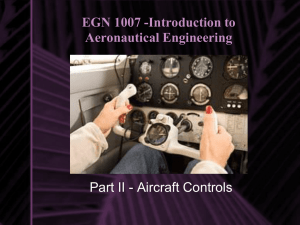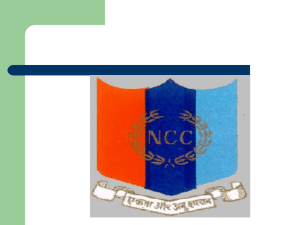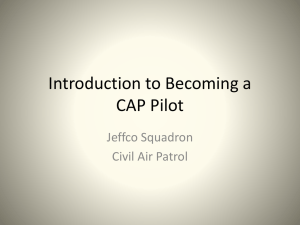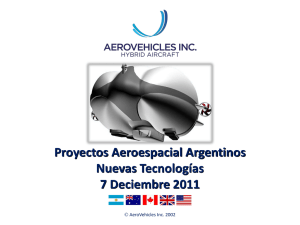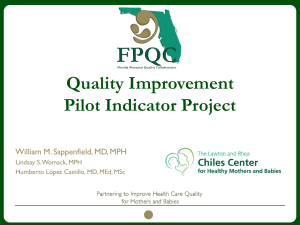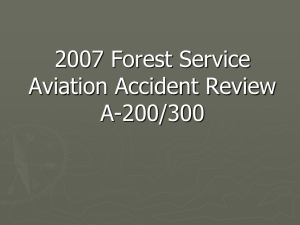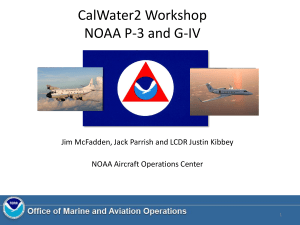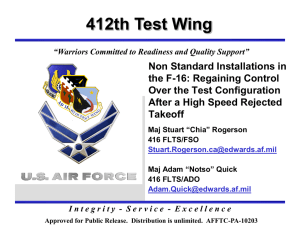Air Law - Aerodromes - Winnipeg Ground School
advertisement
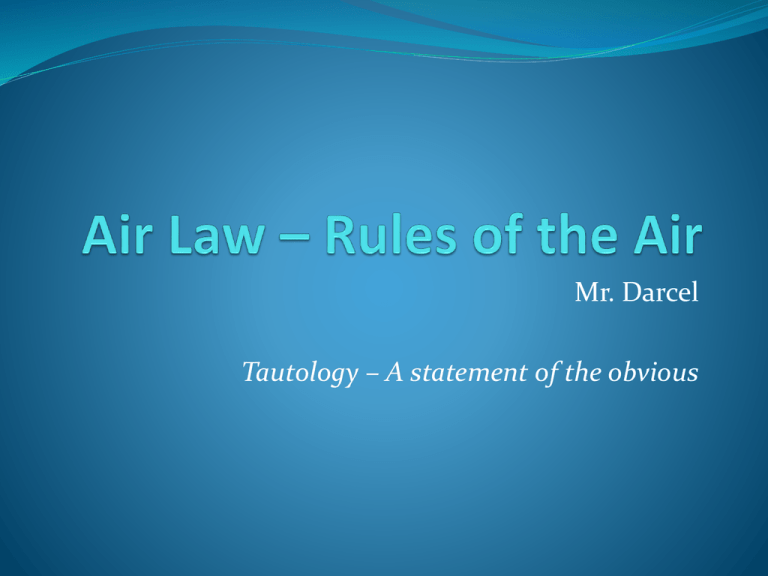
Mr. Darcel Tautology – A statement of the obvious MTPs Right of Way Required Documents AROWJIL Instruments Required for Day VFR Night A/C Lighting A/C Logs Technical v/ Journey Pilot’s License Validity Right of Way Right of way does not remove collision avoidance responsibility; as pilot, take whatever action you deem necessary. When approaching head-on, each pilot shall alter heading to: Right When converging, the a/c with the other on its Right shall give way Right of Way E mergencies B alloons G liders A irships P owered aircraft with slung load P owered a/c Helicopters Right of Way When overtaking, the a/c being overtaken has right of way. Aircraft overtaking shall do so by passing on the Right When on ground, must give way to aircraft approaching to land. When on final approach, the lower a/c has the right of way However, may NOT cut ahead of other a/c on final Tip: Always the PIC’s responsibility Required Documents The documents below are required to be kept on board the aircraft at all times in order to lawfully operate said a/c. A – certificate of Airworthiness R – certificate of Registration O – Operator’s manual W – Weight and Balance documents J – Journey Logbook (Unless t/o and landing in same place) I – proof of Insurance L – Licenses (ie, Pilot’s License, Radio Operator’s, Medical) Required Documents Certificate of Airworthiness Issued by TC States that under a certain set of conditions, a/c is fit for flight. Conditions may be met by a specified maintenance schedule Essentially, you are confirming this with your pre-flight inspection. Required Instruments for Day VFR As per CARs 605.14: a) where the aircraft is operated in uncontrolled airspace, an altimeter; (b) in controlled airspace, a sensitive altimeter adjustable for barometric pressure; (c) an airspeed indicator; (d) a magnetic compass or a magnetic direction indicator that operates independently of the aircraft electrical generating system; (e) a tachometer for each engine and for each propeller or rotor that has limiting speeds established by the manufacturer; (f) an oil pressure indicator for each engine employing an oil pressure system; (g) a coolant temperature indicator for each liquid-cooled engine; (h) an oil temperature indicator for each air-cooled engine having a separate oil system; (j) a means for the flight crew, when seated at the flight controls to determine (i) the fuel quantity in each main fuel tank, and (ii) if the aircraft employs retractable landing gear, the position of the landing gear; NB – Also need radio equipment where required Required Instruments F uel indicator O il pressure/temp G ear indicator C ompass A ltimeter A SI T achometer NB: A glider gerenally does not require the: Fuel Indicator Oil Indicators Gear Indicator (unless retractable) Tachometer Night “The period of time between the end of evening civil twilight and the beginning of morning civil twilight.” Slight difference from FTGU, which states that it is “Anytime when the center of the sun’s disc is more than 6 degrees below the horizon.” Night A/C lighting: Right Wingtip – Green light, visible for 2 nm in 110ᵒ Left Wingtip – Red light, visible for 2 nm in 110ᵒ Tail – White light, visible for 2 nm in 140ᵒ “There is no red port left” Aircraft Logs Journey Log A log detailing the total air time on the airframe, as well as any snags encountered. A snag is a technical difficulty. Once recorded in the journey log, a/c becomes u/s until signed off by an AME (aircraft maintenance engineer. All entries in log must be maintained for a period of no less than one year. Aircraft Logs Also, under CAR 605.92, “… a separate technical record for the airframe, each installed engine and each variable-pitch propeller” This is the technical log; any idea why we have this? Pitch – the distance travelled forward by the propeller per revolution Pilot’s License Validity Medical License is only as valid if your medical is. Validity period begins on the day of the examination. Validity ends on the first day of the month following the examination. Eg, Medical performed July 5 – It will expire 60 months later on August 1. As pilots under 40, your medicals would be valid for 60 months, assuming you have a Class 3 medical. A Class 1 medical is valid for only a year, but reverts to a Class 3 after this; four years until next examination after that. Pilot’s License Validity Medical (cont.) A medical may be voided at any time, if conditions occur which may prevent the pilot from acting as PIC Eg, Stroke, medications, pregnancy, etc. Pilot’s License Validity Currency (Need to meet both of these) 5 Year Requirement: (Within last 60 months) Must have acted as PIC within last 5 years, or; Must have completed a review with an instructor, and written and passed the PSTAR exam within the last 12 months. 2 Year Requirement: (Within last 24 months) A number of things satisfy this criterion; includes review with an instructor, a self-paced recency questionnaire, attendance at a safety seminar conducted by TC… (full list in CARS 401.05)

